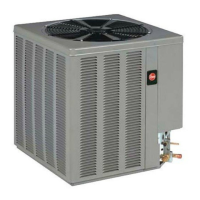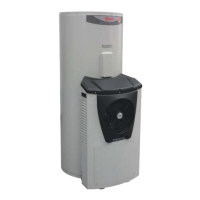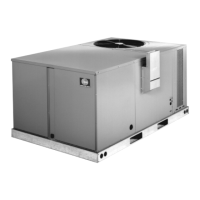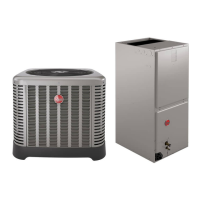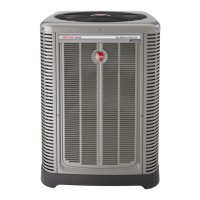43
Advanced operating status and diagnostic
information is available through the Variable Speed
Outdoor Control dual 7-segment display and the
EcoNet
TM
Control Center that greatly enhances the
ability to quickly and accurately diagnose system
faults. The following sections provide details for
the fault codes plus additional troubleshooting
information to assist the service technician.
9.1 Fault Recall
Procedure
Fault codes can be recalled using the EcoNet
TM
Control Center service menu or by using the
Variable Speed Outdoor Control (VSODC) menu.
The EcoNet
TM
Control Center service menu is by
far the best method as it provides additional fault
codes and greater detail that can be used when
diagnosing the system.
To access the EcoNet
TM
Control Center service
menu, select SERVICE on the screen and navigate
to the fault code section to retrieve any fault codes
that have been stored.
To access fault codes on the VSODC, press the
SW2 and TEST buttons at the same time for at
least 8 seconds and release. FC (Fault Codes) will
be displayed on the dual 7-segment display as the
first menu item. Press the SW2 button to display
the first fault code that was stored. Continue
pressing the SW2 button to retrieve additional fault
codes in the order they were stored. Press the
TEST button to return to the main menu.
9.2 Compressor/
Fan Motor Test Mode
A test mode is provided on the Varible Speed
Outdoor Control (VSODC) to determine if the
compressor and outdoor fan motor are operational.
• Enter TEST mode by pressing the TEST button
on the VSODC with an insulated probe for one
(1) second and release.
• The TEST mode causes the VSODC to do the
following:
1) Resets the 5-minute anti-short-cycle timer.
2) Energizes the unit without a call for unit
operation.
• If the 5-minute anti-short-cycle timer or 30-second
minimum run timer is active (a flashing “c,” “C,”
“h,” or “H” is displayed on the dual 7-segment
LEDs) and a call for unit operation is present, the
TEST mode causes:
1) A “t” to display momentarily on the dual
7-segment display.
2) The compressor will start and the outdoor fan
will operate.
3) The display will change to a steady “c,” “C,”
“h,” or “H” to show the current demand for
unit operation.
NOTICE: If a call for unit operation is
present at the end of the TEST mode, the unit will
continue to operate.
• If no call for unit operation is present, the TEST
mode causes:
1) A steady “C” to appear on the dual 7-segment
LEDs.
2) The compressor will start.
3) The compressor will turn off after 5 seconds.
NOTICE: Entering TEST mode
without a call for unit operation will cause the
compressor to run for 5 seconds.
9.3 Defrost Test Mode
Normal Defrost Test Mode: A defrost test mode
can be initiated by pressing the TEST button on
the VSODC for 1 second when the system is
operating in the heating mode. Upon release of the
TEST button, the system will initiate a defrost cycle
until the coil temperature reaches the termination
temperature or 14 minutes have elapsed. The
coil temperature must be below 70°F [21.1°C] or
the system will not initiate a defrost test. A “d”
will appear on the VSODC display indicating the
system is in the defrost mode. Pressing the TEST
button while the system in in the Defrost Test
Mode will terminate the test mode. If the system
initiates and terminates the defrost cycle normally,
the system is working properly. Termination of the
defrost cycle after the 14 minute maximum time
is very unusual and typically indicates a problem
with the coil temperature thermistor or it’s wiring
connections.
Continuous Defrost Test Mode: The VSODC
can be forced into a continuous defrost mode
by holding the TEST button down for at least 5
seconds and releasing when the system is in the
heating mode.The system will remain in the defrost
mode until the TEST button is pressed again. If
the system is left in this mode for too long, the
High Pressure Control will trip and shut the system
down.
9.0 DIAGNOSTICS & TROUBLESHOOTING
Diagnostics
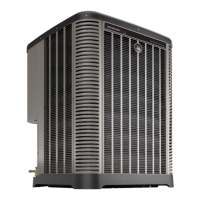
